#car-dependency
Text
Car-dependent sprawl is not a harmless option
Pedestrian-hostile suburbs aren’t balanced out by the presence of walkable urbanism elsewhere; they’re a problem that should be fixed.
By Darin Givens, 11/27/2022
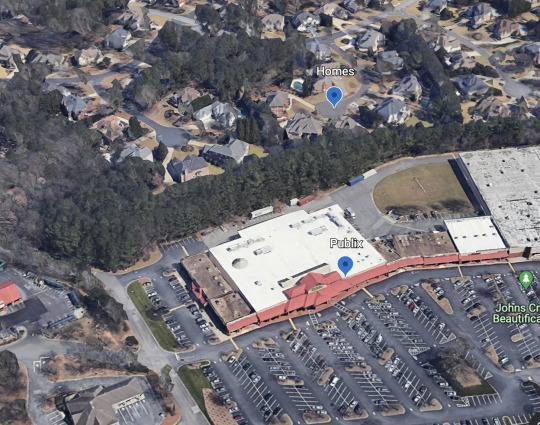
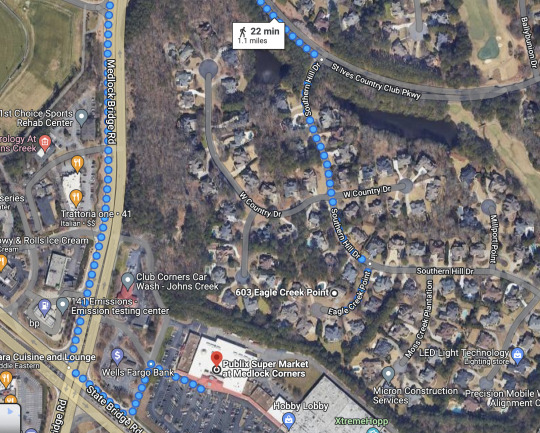
In Johns Creek, GA you can live a stone's throw from a grocery store that would require a whopping 1.1 mile trek if you wanted to walk to it instead of driving. This is the restrictive zoning that some people want, in order to "protect" single family homes from the scourge of walkable mixed-use urbanism.
Yes, this is the suburbs. But I don’t accept the argument that it’s OK to allow this for the people who want it as an option, versus walkable urban design. Certainly not at the incredible scale that we’ve seen in the past few decades worth of sprawl in the Atlanta metro area and elsewhere.
Buildable land is a precious resource in the Atlanta region. We aren't making more of it. In fact, to preserve unbuilt ecosystems, we need to stop sprawling into the dwindling forests of the Georgia Piedmont.
To improve health outcomes, we need to create less pollution and boost the safety of active transportation; sprawl is correlated with increased energy use and pollution. To improve equitable outcomes, we need neighborhoods near stores/jobs to be more walkable and more serviceable by transit. To improve services for the public, we need our land-use to capture as much value as possible (sprawl does the opposite).
Here’s the scene you would encounter on foot if you tried to get to the grocery store from the homes above. It’s an inhumane environment for pedestrians that demands access to a personal vehicle for navigating it, and for getting to daily necessities and jobs. Saying “if some people want inhumane spaces, we should support that desire with restrictive zoning laws” is ridiculous.

Car-centric sprawl is not a neutral, harmless “option” for living. It’s a thing that hinders progress on our health/climate/environmental goals. Local governments should not be providing it in mass quantities through restrictive zoning laws.
Many political conservatives complain about “nanny state” laws, but zoning laws which demand car-centric places while outlawing anything else are about as “nanny” as it gets. The government is enforcing automobile dependency through public laws — and the ‘public’ nature of it makes us all complicit in the harmful outcomes.
#suburban sprawl#sprawl#atlanta#urban sprawl#urban design#urbanism#urban planning#zoning#Car-dependency
144 notes
·
View notes
Text
Let's help Atlantans beat the high cost of car ownership by offering a better, more walkable future
by Darin Givens, 12/24/2023
This image shows part of the United Auto Recovery lot in Hapeville, just south of Atlanta (and this is only a section -- it goes on).
What you're looking at are repoed vehicles waiting for owners to pay lenders off and recover them.

To my eyes, it's also a picture of the need for affordable homes in transit-served density, where the expense of car ownership is less of a necessity and the threat of repossession is less present in peoples' lives.
The struggle of transportation costs is real, and it's getting worse every year.
According to a NY Times report, the average annual cost of new-car ownership rose to $12,182 this year due to increased "purchase prices, maintenance costs and finance charges." That's an incredible cost burden -- one that obviously hits lower-income drivers the hardest.
Too often, we demand car ownership by way of our unwalkable, sprawling urban designs which offer little alternative. We essentially enforce this burden.
Also from that NYT article:
"America’s dependence on automobiles means hefty bills, the risk of dangerous crashes and stress. And now, even with strong wage growth and elevated savings in recent years, high sticker prices and escalating interest rates are starting to take a toll: The share of borrowers moving into delinquency jumped sharply in late 2022 and early 2023"
When you read "borrowers moving into delinquency," understand that to also mean 'people who have little choice but struggle with car-ownership burdens because we aren't allowing them affordable homes in walkable neighborhoods rich with transit services'.
For a look at the savings we could allow residents in a less car-dependent, future version of Atlanta, take a look at this chart showing the difference between car ownership costs and annual transit-pass costs for the average Atlanta transit commuter (source: atltransit.ga.gov).

Of course, you have to multiply that cost of transit passes for each person in a house. But even if we can get to a level of walkability that allows two-car families to trim down to one car, that's a lot of savings.
We can do this. Bit by bit, we can use public tools like Invest Atlanta, and zoning reform, and the city's affordable housing fund, and the More MARTA program (and much more) to provide affordable homes in a compact, pedestrian-scaled setting that's easily served by transit routes.
It's crucial that we remain optimistic about our chances for success when it comes to creating a better Atlanta that lifts people out of the burdensome costs of car-centric places -- not just money, but also poor health outcomes and threats to safety.
So here's me, hoping for more hope in the the new year. Let's find it and cling to it in 2024, and make great strides in building better places. Don't get held down by the oppressive weight of car-dependent, inequitable, unsustainable built environments. Hold tight to a vision for change & progress.
13 notes
·
View notes
Text

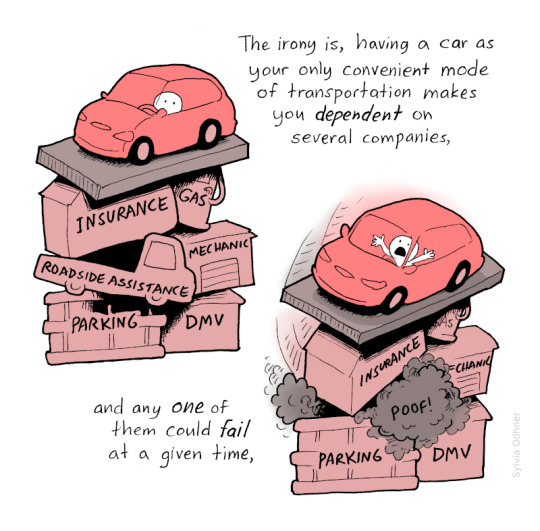
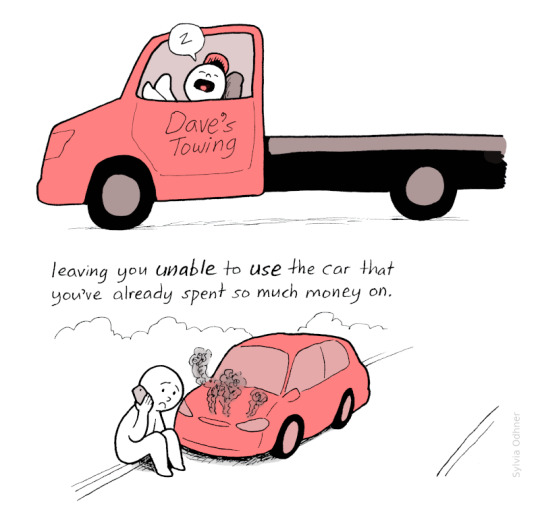

Cars and Independence
My Patreon
Update: This comic has received a lot of both positive and negative attention, and I decided to post a follow-up comic to address some of the criticism: Revisiting Independence
22K notes
·
View notes
Text
#i had this idea for a poll last week bc i think car names are fun#and i finally got polls today#i would love functional public transportation but that's not my reality so if i'm gonna depend on a car i will name it#my car's name is clyde :)#after the tortoise in elementary
18K notes
·
View notes
Text
#my bs#im canadian from BC#and id comsider a 3-4 hour drive to be long#but depends on the context#poll#polls#tumblr poll#tumblr polls#tumblr#long drive#road trip#trip#driving#canada#car#cars#drive
10K notes
·
View notes
Link
The United States is over-parked and under-housed, and I think it’s a tragedy.
But this tragedy begs a question: how did things get this way?
At first glance, the paradoxes seem evident. People are priced out of cities and living on the streets, yet we’ve dedicated huge swaths of land to (nearly empty) parking lots and enormous roads that are home to what we truly value: cars.
The reality of sprawl has forced people into a zero-sum game where buying a car is not a luxury or a helpful tool, but a necessity to ensure any economic success in the current system.
Regulations such as parking minimums still plague the local system of city codes and urban planning, requiring that giant parking lots be built, which only perpetuates sprawl, isolating people and forcing them to drive.
But why do parking minimums, which face considerable criticism, remain in place in many cities?
A Slate article tried to answer that question:
If parking minimums are so bad, then why do we have them? There are two common explanations. One is that well-meaning traffic engineers believed that they could force the private sector to solve the mess of curbside parking chaos, and local politicians are now afraid of risking a dreaded “parking shortage” by letting the market decide how much parking is necessary. A more cynical take is that neighborhoods use parking as a value-neutral argument to stop new development, effectively banning low-income and infill housing without having to say so.
This all tracks. Parking minimums are irrational and wasteful, but they serve the purposes of many areas in the United States.
So how does this work? Imagine someone wants to build an infill project on a lot. The project makes the most sense if you don’t build parking, especially since it’s a smaller building with only a handful of apartments. Yet parking minimums often require the developer to build a certain number of parking spots per apartment, driving up costs to unrealistic levels.
With that leverage, local governments can essentially bargain with developers to get what they want, whether that’s affordable housing or public services. The irony is that these deals have become necessary because of tight zoning laws, which have undoubtedly reduced tax revenue but protected private property interests within the area.
As the Slate article observes, we’re stuck in some sort of hellish make-rules-to-break-rules scenario, where overly restrictive housing and parking rules are imposed on developers. These developers then have to make deals with the city to build something with, say, more density, or less parking. In a world where zoning is used to wield power over developers, local jurisdictions and city councils are reluctant to let go of these laws.
Regardless of your view on the matter, it’s difficult to deny that the market is being undermined, an exceedingly strange occurrence in a market-minded country where decisions are often made based on what is best for the economy. Despite that, U.S. zoning laws have remained oddly draconian.
What we get, in the end, is a tragedy. We assume there should be plentiful parking and create a self-fulfilling prophecy where there is no choice but to drive. If this cycle continues, we will all remain stuck in traffic, wondering why we have to drive hours every day just to do our daily tasks. When we visit some walkable, vibrant city in Europe, we will lament once again about how our cities aren’t like this. And if we do a little research, we’ll see that the choices made over the last half-century have made all the difference, crafting a landscape that is designed for cars rather than people.
0 notes
Text
The thing about car-dependency is that... it sucks for people without a car. Big news, right. But, it’s not like that incentive curve is something we can just ignore. When our desire or ability to leave our house at all is conditional on being in a car, that affects all of our behaviour on every level.
Kids are the prototypical ‘person without a car’, and in a car-dependent area, they become dependent on their parents. In a normal, walkable city or suburb, children walk on their own to school, they cycle, they take the bus. Instead of needing to get parental approval - and enough enthusiasm to dedicate the time - to be shuttled around to any given activity, children walk to the park, or to a friend’s house. Even in rural areas, with the infrastructure, children will cycle to school. In a car-dependent suburb, a child is trapped in a single-family McMansion on the edge of town, forced to beg their parents to be able to go anywhere, always under supervision - is it any wonder they’d rather stay inside?
Even in a city, if it’s car-dependent, this is still an issue. When the roads are 100-decibel, 6-lane monstrosities, with cyclists expected to intermingle with traffic, and the busses stuck in the exact same jam, kids aren’t going to be able to get anywhere, assuming their parents even let them cross the street. This isn’t just about proximity, it’s fundamentally related to safety. Car-dependent places are a lot more dangerous to be in, on account of all the cars, so parents feel it’s safer for their kid to be in one of those cars. To boot, when everyone’s in a car, there are less people around, less people who can notice someone in trouble, less people who can help. When places are built with the assumption that everyone will have a car, they become places for cars, which humans can stupidly venture into.
This doesn’t just apply to children. We are all, at some point or another, a ‘person without a car’ - in fact, we’re a ‘person without a car’ most of the time, until we get into one. A lot of people would prefer to remain that way; driving a car is stressful, it takes a lot of effort and concentration, and not everyone likes it at 6AM. But, when your environment is built with the assumption you’re inside a soundproof, crash-proof metal box, that becomes a requirement. The second you’re outside of those conditions, scurrying across deafening, hot tarmac, and dodging heavy-duty pickup trucks (carrying solely one guy and his starbucks order), of course you’d decide that not being in a car sucks. But, the thing is, it’s designing for cars that made it suck, even for the car-drivers.
A place designed for cars, a place that people cannot walk, or cycle, or take public transit through, is a place full of cars - you are not stuck in traffic, you are traffic. Studies have shown that the average speed of car traffic, over sufficient time, is completely unrelated to the thoroughfare of roads. Eventually, because of induced demand, the new seven-lane arterial road will have exactly the same congestion as the two-lane it replaced. The one factor that sharply determines how slow road traffic gets is, listen to this, the speed of non-car travel. It is solely when alternatives become faster that people stop driving and free up traffic. Shutting down main street, only allowing buses through, would drastically increase the speed of the rest of the road network - because each of those buses is 40 cars not in traffic. If you like driving, you should want as many people as possible who don’t want to drive to stop doing it - and whoever you are, you should want to be able to travel without depending on cars.
When I was in the biggest depressive slump of my life, and I could barely get out of bed, I still went shopping for food nearly every day, and even traveled to visit my partner. The supermarket was 10 meters out the door of my apartment, and I could walk five minutes to either train station if I had to. It was peaceful and quiet outside. My disabled mother doesn’t like living in cities, but she loves public transit, and will always take a train ride over a long, tiring car journey - and when every store doesn’t need a parking lot twice as big as itself, whatever walking she does have to do is over a much shorter distance. When I’ve had to call an ambulance in a ‘car-hostile’ place, it has arrived inconceivably faster, on those clear roads, than when sitting in the traffic of the highway-lined carpark that makes up so many cities.
Car dependency sucks for everyone, including car drivers, but it sucks the worst for people already suffering. It strips you of independence, and forces you into a box you might not fit in - and I haven’t even touched on pollution. Car-dependency makes cities and suburbs into dangerous, stressful places, devoid of everyone except the most desperate. The only people it benefits are, really, the CEOs of car companies.
38K notes
·
View notes
Text







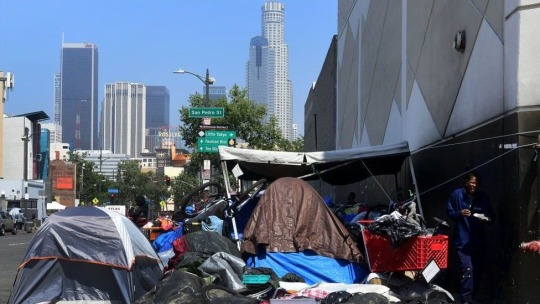


#4th of july#america#usa#transit#roads#car culture#political#multipost#urban planning#car dependency#not just bikes#moodboard#usa moodboard#american dream#urbanism#urban design#bike lanes
21K notes
·
View notes
Photo

Car(ule) 🚗
#196#r196#rule#r/196#car dependency#car dependent infrastructure is cringe#r/19684 is still open so i guess ill hang out there as well but tumblr has been pretty nice though so ill keep rule posting
1K notes
·
View notes
Text
thinking about modern au Kabru
ivy league college student, probably studying law and political science on a full scholarship. first time living away from Milsiril so he has to promise her, yes mom i’ll call you at least four times a week, no mom i don’t need your amex black card, yes mom the normal credit card is fine i need to learn how to budget like a Normal Person (it has a limit of $20k — that’s not normal Kabru).
Milsiril insists for a long time that she’ll just get him a house off campus so he can have his own space (aka a place she can drop by anytime and possibly live a few months out of the year just to be close to him) but Kabru puts his foot down and tells her the best way he’s gonna make friends is by living with other students (bye mom).
his floor in the coed dorms is the party floor and he always makes sure to invite everybody (his nightmare is accidentally leaving anyone out and having them think that he doesn’t like them). somehow it’s always a good time, everyone leaves with more friends than they came with, it never gets totally out of control, and plenty of girls who are interested in him (and a lot of guys too tbh) bring tons of baked treats so there’s always free food. Kabru is the RA’s favourite person to have in the building (even though Kabru himself is messy but most of the people he’s friends with are nice and clean up after themselves).
he has a porsche (Milsiril gift for his 16th bday) but he’s adamant about not driving it unless he absolutely has to (because he doesn’t wanna look like a douche). BUT he never says no when his friends ask for rides (so he ends up driving all the time anyway). he actually contemplates selling the porsche and going for a more practical car but Mickbell is like ‘dude you are not taking this away from me.’ Kabru sighs and decides to keep it because his friends (Mickbell) like being chauffeured around in a fancy convertible (Rin, Holm, and Dia don’t care, they’re just glad they don’t have to walk to the grocery store).
he’s probably on a casual texting basis with most of his professors and you know he’s going to all their office hours, grabbing beer with them just to keep chatting about life outside of school. and that’s how he winds up in some super secret faculty group chat where he’s now privy to all the college administration gossip.
Kabru is elected for student council during his freshman year and he’s probably the favourite to be sc president one day.
he doesn’t really date (gets too in his head about how he doesn’t wanna ruin any friendships) but he does hang out one on one with a lot of girls and treats them all really well. he probably goes so far out of his way to be platonic that he flies a little too close to the ‘Just Like One of the Girlies’ sun, he kinda forgets that most people interpret it as flirting coming from him. which leads to a few awkward conversations. people feeling led on, a few angry jealous boyfriends, scathing dms about him being a girl stealing homewrecker.
it’s such a nightmare for him and he needs it to end right now. so he begs Rin to ‘date’ him for a week or two and then publicly dump him just so the entire student body gets the message that he is Just A Friend.
Rin stares at him for a few seconds. then she laughs. she laughs and laughs. she laughs for a crazy long time. and then eventually she goes, ‘wow you’re an asshole, Kabru. no i won’t be your fake girlfriend. you’re gonna suffer and i’m going to enjoy it.’
and that’s when Kabru has a moment of enlightenment. ok yeah. asking for that is probably really selfish and mean. maybe he needs to think about girls’ feelings more and that’s maybe more important than his deep seated need to be liked, and when has Rin ever been wrong about anything.
he apologizes. and so begins one of the more serious talks he’s ever had with Rin about being okay with not being liked.
he thinks he can really turn over a new leaf. the whole ‘not worrying about what other people think’ thing goes pretty well — up until Kabru meets the aloof professor for his Monsters and Myths class who keeps forgetting and mispronouncing his name.
Kabru has never needed someone to like him So Bad, he needs Prof. Touden to like him as a matter of life and death, and he’s willing to look stupid for it (fails a midterm on purpose to justify begging for one on one tutoring)
#wow if you made it to the end of this post here’s some surprise labru#kabru says fuck my gpa i need this white boy to like me#i am plagued by demons (labru professor/student situationship)#dungeon meshi modern au#ok but the Kabru Milsiril dynamic is my new favourite chew toy#especially them in a modern setting#all of the lavish gifts and expensive lifestyle that Milsiril would want Kabru to have#perhaps even as a way of depending on her forever (love to an unhealthy degree)#but Kabru is more interested in people than material things#so perhaps he’s a little out of touch financially (thinks a jug of milk costs $12)#but he’s still very much socially aware#enough to know that he can’t just be another annoying trust fund kid with a dumb car and designer clothes and zero fucks about academics#so his social and academic excellence is probably in large part overcompensation for his privileged upbringing#and even the thought of someone not liking him gives him stomach cramps LOL#kabru my love you will always be famous#kabru of utaya#kabru#wasabi rambles#labru#dungeon meshi#delicious in dungeon
224 notes
·
View notes
Text


It was sad to see this beautiful old illustration of the Municipal Market in Atlanta, because I immediately knew how much of that urban fabric was demolished for freeways & parking.
Counteracting this damage to Downtown will take a lot of work.
Illustration source:
https://www.atlantahistorycenter.com/blog/atlanta-department-of-city-planning-records-now-available/
Nonetheless, I'm very glad that the Municipal Market is still standing. It's one of my favorite places in the city for lunch.
9 notes
·
View notes
Text
#walkable cities#Car centric infrastructure#fuck cars#city planning#car dependency#car dependent infrastructure#capitalism#anti capitalism#Anticapitalism
1K notes
·
View notes
Photo


Maric, rowan and loghain have SUCH chokehold on me it isnt funny
#THEM THEM THEM#slaps car so much trauma and co dependency can fit into this bad boy aha#dragon age#the stolen throne#dao#dragonage#dragon age the stolen throne#teyrn loghain#loghain mac tir#maric theirin#rowan guerrin#king maric#dragon age loghain#dragonage fanart#fanart#original art#original artwork#character art#book art#daoart#daocart#dragon age art#trio#drawing#artists on tumblr#artistoftumblr
1K notes
·
View notes
Text
If you were to imagine the first car-free neighborhood built from scratch in the modern US, it would be difficult to conceive such a thing sprouting from the environs of Phoenix, Arizona. [...] But it is here that such a neighborhood, called Culdesac, [...] an unusual experiment has emerged that invites Americans to live in a way that is rare outside of fleeting experiences of college, Disneyland or trips to Europe: a walkable, human-scale community devoid of cars.
[...] The apartments are also mixed in with amenities, such as a grocery store, restaurant, yoga studio and bicycle shop, that are usually separated from housing by strict city zoning laws.
...
“It’s positively European, somewhere between Mykonos and Ibiza,” said Jeff Speck, a city planner and urban designer who took a tour of Culdesac earlier this year. “It is amazing how much the urbanism improves, both in terms of experience and efficiency, when you don’t need to store automobiles.”
...
[C]ar dependence has been reinforced by zoning laws that not only separate residential from commercial developments, but require copious parking spots added for every new construction. “The result is a nation in which we are all ruthlessly separated from most of our daily needs and also from each other,” Speck said.
Culdesac can be seen, then, as not only a model for more climate-friendly housing – transportation is the US’s largest source of planet-heating emissions and, studies have shown, suburban sprawl fuels more of the pollution causing the climate crisis – but as a way of somehow stitching back together communities that have become physically, socially and politically riven, lacking a “third place” to congregate other than dislocated homes and workplaces.
...
Vanessa Fox, a 32-year-old who moved into Culdesac with her husky dog in May, had always wanted to live in a walkable place only to find such options unaffordable. For her, Culdesac provided a sense of community without having to rely on a car every time she left her apartment. “For some, cars equal freedom, but for me, it’s a restriction,” she said. “Freedom is being able to just simply walk out and access places.”
...
Driving to places is so established as a basic norm that deviation from it can seem not only strange, as evidenced by a lack of pedestrian infrastructure that has contributed to a surge in people dying from being hit by cars in recent years, but even somewhat sinister. People walking late at night, particularly if they are Black, are regularly accosted by police – in June, the city of Kaplan, Louisiana, even introduced a curfew for people walking or riding bikes, but not for car drivers.
If neighborhoods like Culdesac are to become more commonplace, then, cities will not only have to alter their planning codes, but there will also have to be a cultural switch from the ideal of a large suburban home with an enormous car in the driveway. [...]
Johnson, who said he is planning to bring the Culdesac concept to other cities, is upbeat about this. “This is something that the majority of the US wants, so they can work all over the country,” he said. “We have heard from cities and residents all over the country that they want more of this, and this is something that we want to build more.”
261 notes
·
View notes
Link
Au moment où la ministre des Transports et de la Mobilité durable, Geneviève Guilbault, procède à une vaste tournée de consultations afin de trouver des solutions aux problèmes de financement du transport collectif, l’Alliance TRANSIT propose une série de mesures aux élus, dont l’indexation de la taxe sur les carburants et la tarification du kilométrage parcouru par les automobilistes.
Les dépenses des sociétés de transport sont à la hausse alors que les revenus ont fortement diminué dans les dernières années et la baisse d’achalandage provoquée par la pandémie n’a fait qu’accentuer ce manque à gagner.
Le trou budgétaire des sociétés de transport atteindrait 900 millions $ en 2027, selon l’Association du transport urbain du Québec (ATUQ).
L’une des sources de financement des projets de transport en commun provient du Fonds des réseaux de transport terrestre (FORT), qui lui est principalement alimenté par la taxe sur les carburants.
« Mais cette taxe sur les carburants n’a pas été indexée depuis 2013 », a fait remarquer l’experte en transport Florence Junca-Adenot lors d’une conférence de presse jeudi matin à Montréal.
« Pendant ce temps-là, il y a eu 28 % d’augmentation de l’inflation » alors que « les revenus ont été gelés », a ajouté la professeure au département d’études urbaines et touristiques de l’Université du Québec à Montréal (UQAM).
Si l’on ajoute à cela le fait que les revenus de la taxe sur les carburants diminueront éventuellement en raison de la place de plus en plus importante des voitures électriques dans le parc automobile, on se retrouve à un « moment charnière », a illustré la professeure de l’UQAM.
Florence Junca-Adenot fait partie de l’Alliance TRANSIT, un regroupement d’une soixantaine d’organisations qui vient de publier le rapport « Nouvel élan » qui propose une série de mesures pour assurer la pérennité du transport collectif au Québec.
Indexation de la taxe sur les carburants
À court terme, l’alliance propose d’indexer la taxe sur les carburants.
« Ce n’est pas une nouvelle taxe, c’est tout simplement de mettre à jour ce qui existe », a indiqué Samuel Pagé-Plouffe, de l’organisation Vivre en ville.
Le rapport « Nouvel élan » souligne que « si la taxe sur les carburants avait suivi l’inflation à partir de l’année 2013-2014, les revenus seraient de 273 millions $ plus élevés pour le Fonds des réseaux de transport terrestre à l’année 2021-2022 ».
Tarification du kilométrage
Parce que la taxe sur les carburants est appelée à disparaître raison de l’électrification des transports, l’Alliance TRANSIT propose d’éventuellement la remplacer par une tarification kilométrique pour financer le transport collectif. Cette mesure, du type utilisateur-payeur, imposerait un tarif à l’utilisation d’un véhicule selon le nombre de kilomètres parcourus.
« La contribution, fonction du nombre de kilomètres parcourus, peut être modulée selon l’heure de la journée, le lieu du déplacement, le type de véhicule utilisé et même le seuil de distance atteint. Il pourra ainsi être plus économique de se déplacer avec un véhicule compact, en dehors des heures de pointe, et tant qu’on n’a pas atteint 15 000 kilomètres dans l’année, par exemple », soulignent les auteurs du rapport.
Selon l’Alliance TRANSIT, une telle mesure permettrait de réduire la congestion, les gaz à effet de serre et la pollution atmosphérique en incitant plus de gens à se tourner vers d’autres modes de déplacement, comme les transports actifs.
« La science de la mitigation climatique dicte une plus grande sobriété en transport », peut-on lire dans le rapport.
Paiement d’immatriculation
Depuis 1992, les automobilistes contribuent au financement du transport en commun par le biais d’un paiement de 30 $ sur l’immatriculation de leur véhicule, mais là encore, cette contribution n’a pas suivi l’inflation.
« La contribution de 30 $ pour le transport collectif via les paiements d’immatriculation n’a pas été indexée depuis 1992. Ça c’est l’année où Marie Carmen sortait ses plus grands succès comme l’Aigle noir et que Kris Kross nous faisait danser avec son grand classique Jump », a fait remarquer avec humour Marc-André Viau, d’Équiterre, également membre de l’Alliance TRANSIT.
Parmi les autres mesures que l’Alliance TRANSIT suggère au gouvernement pour financer le transport en commun, il y a notamment la taxation sur le stationnement non résidentiel, les péages routiers et l’instauration d’un système de redevance-remise. Aussi connu sous le nom de « bonus-malus », un tel système permettrait l’octroi d’un bonus à l’acheteur d’un véhicule neuf qui consomme moins que celui qu’il possédait avant. À l’inverse, un montant supplémentaire, une taxe, serait impos�� à l’achat d’un gros véhicule énergivore.
Faire payer les automobilistes
La majorité des mesures proposées toucherait donc aux portefeuilles des automobilistes.
Pour l’Alliance TRANSIT, ce ne serait qu’un juste retour des choses.
« Actuellement, la situation est inéquitable. Les automobilistes ne paient pas leur juste part du réseau routier. Il faut que les coûts reflètent véritablement les déplacements », a indiqué Sarah Doyon, directrice générale chez Trajectoire Québec.
Celle-ci a notamment fait référence à une récente étude réalisée par des chercheurs de l’Université Laval qui indique que pour chaque dollar dépensé individuellement, la société québécoise paie 5,77 $ pour le transport en voiture et 1,21 $ pour le transport collectif.
L’Alliance TRANSIT demande d’ailleurs depuis longtemps au gouvernement de rééquilibrer les investissements entre le réseau routier et le réseau de transport collectif, alors que le réseau routier obtient 31,5 milliards $ des investissements planifiés pour la prochaine décennie, plus que le double du montant de 13,8 milliards $ prévu au transport collectif selon le Plan québécois des infrastructures.
La ministre des Transports et de la Mobilité, Geneviève Guilbault, a entamé une tournée de consultation à travers la province « afin de trouver une solution pérenne et réfléchie aux enjeux entourant le financement structurel du transport collectif ». Elle doit rencontrer des élus et des représentants de sociétés de transports collectifs.
0 notes
Text
dee is 100% the most psychotic member of the gang but y’all aren’t ready for that conversation
#case in point: rickety cricket#i’m just saying if anyone’s gonna be a serial killer it’s not gonna be dennis it’s gonna be dee#i mean she literally set her college roommate on FIRE#and was then institutionalised#and when she is confronted about this she is overcome with rage#plus she understands the implication IMMEDIATELY before dennis even explains it to her#and even has her own version of ‘the implication’ involving threatening to falsely accuse men if they don’t sleep with her#what makes her worse too is that she doesn’t even REALISE she’s unstable#she’s under the impression she’s the most normal member of the gang#in fact she’s convinced ben the solider is trying to D.E.N.N.I.S. her when in actuality she’s unconsciously D.E.N.N.I.S.-ing him#he’s so dependent on her that he’s willing to wait in a hot car for hours on end while she hangs out with the gang#i love her though and personally think she’s simply a silly billy#dee reynolds#iasip#it’s always sunny in philadelphia
819 notes
·
View notes